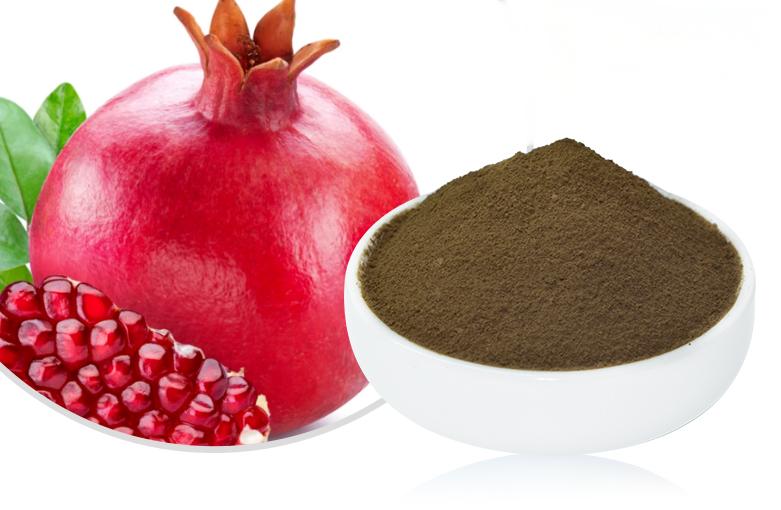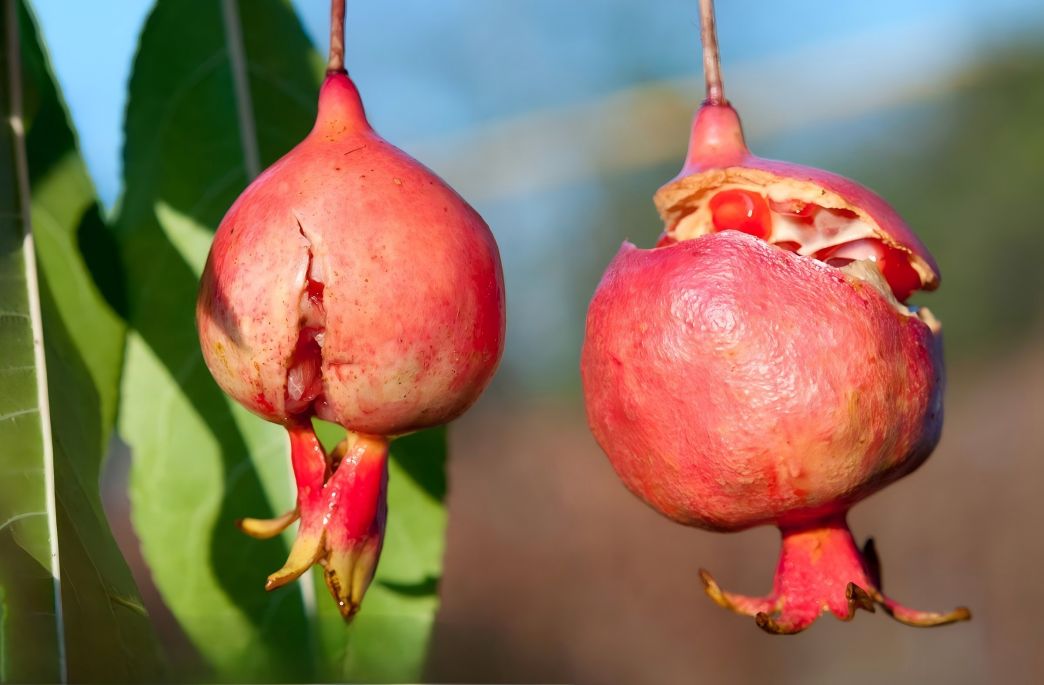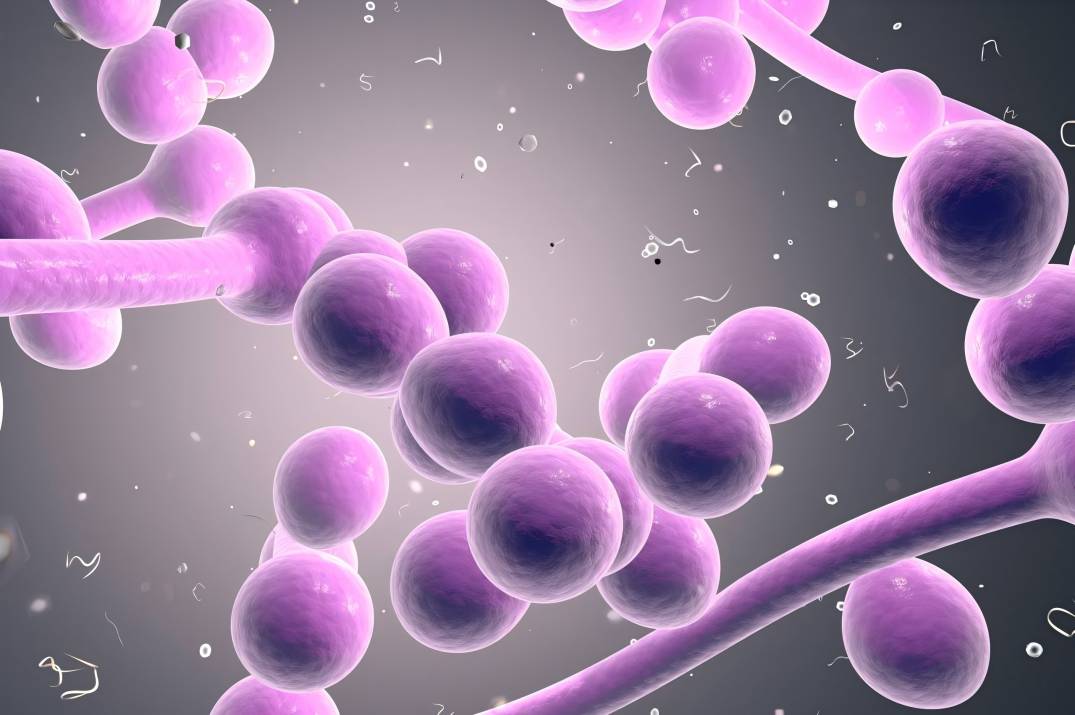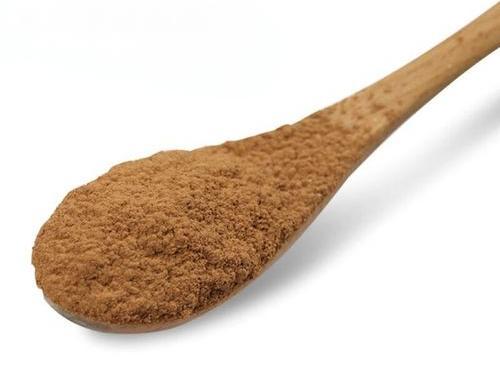What Is Pomegranate Peel Extract Antioxidant Benefit?
Pomegranate peel is the dried fruit skin of pomegranate, which has the efficacy of astringent, stopping bleeding, repelling worms and so on, and it is a species included in the successive editions of the Chinese Pharmacopoeia. Pomegranate (Punicagranatum L.) is a genus of pomegranate in the family of Pomegranaceae, and it is a kind of medicinal and food plant. At present, the most important way to consume pomegranate is to eat it fresh, or to process it into juice, jam and wine, but the pomegranate peel, which accounts for 20%-30% of the pomegranate, has not been fully utilized, and most of it has been discarded, which results in a serious waste of resources. Years of research have shown that pomegranate peel has significant antibacterial, anticancer, antiviral and antioxidant effects. Pomegranate peel has been popular among researchers. Among them, the research on the antioxidant activity of pomegranate peel is the most common. The author makes a review of the antioxidant activity of pomegranate peel extracts at home and abroad in recent years.
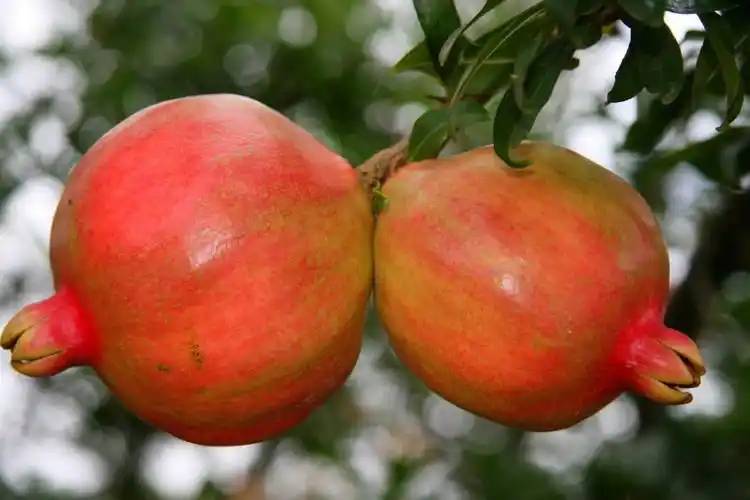
1 Principle and effect of pomegranate peel antioxidant
Free radicals are intermediate metabolic products of many biochemical reactions in human body. Under normal circumstances, free radicals are in a dynamic balance of constant generation and constant elimination in the human body. If too many free radicals are generated or too few are eliminated, free radicals will cause damages to the body at the molecular level, cellular level and organ level, for example, they can attack the carbon and water compounds, proteins, lipids, nucleic acids and so on, which can accelerate the aging process of the body and induce many diseases such as cancer and cardiovascular diseases.
Among the many free radicals, hydroxyl radical (OH) is the most reactive, with a very fast reaction speed, which is the most harmful to the body[1] . The compounds contained in pomegranate peel can exert antioxidant effects through a variety of pathways and have strong antioxidant and radical scavenging abilities. These physiologically active components can quench reactive oxygen species, act as hydrogen donors to eliminate various oxygen radicals and reactive oxygen species, inhibit oxidative enzyme activities, block free radical transport by binding with oxygen radicals to form a stabilizing intermediate, and complex metal ions that have catalytic functions [2]. 2]. Zhang Xi et al.[3] showed that the four extracts of pomegranate peel: aqueous, methanol, acetone and ethyl acetate had the ability to resist lipid peroxidation and scavenge the free radicals of diphenylphenyltrinitrophenylhydrazine (DPPH), and their antioxidant activities increased with the addition of the amount. Among the four extracts, the acetone extract showed the highest antioxidant activity against lipid peroxidation, and the scavenging ability of the four extracts against DPPH radicals was in the following order: aqueous, acetone, methanol and ethyl acetate extracts.
Negi et al[4] used ethyl acetate, acetone, methanol and aqueous extracts of pomegranate peel to form a phosphomolybdenum compound to evaluate its antioxidant capacity, and the experimental results showed that it also had strong antioxidant capacity, but the aqueous extract was relatively low. The results showed that they also had strong antioxidant capacity, but the aqueous extract was relatively low. This may be related to the selection of experimental conditions for both. Tian Hu et al.[5] evaluated the antioxidant capacity of the alcoholic extract of pomegranate rind and mouse liver homogenate in a common bath, and used the amount of malondialdehyde (MDA) as the indicator of the degree of lipid peroxidation, which was triggered by spontaneous generation of lipid peroxidation or by the radicals inducers CCl4, H2O2, and Fe2+ -VitC, respectively. The results showed that the alcoholic extract of pomegranate peel could significantly reduce the spontaneous MDA production in mouse liver tissue, attenuate the hepatic lipid peroxidation reaction caused by CCl4, H2O2 and (Fe2+ -VitC), and had good anti-lipid peroxidation effects.
Zhou Benhong et al.[6] studied the lipid peroxidation induced by three reactive oxygen species as an experimental model, and set up a model control group, a normal control group, and three pomegranate peel extract administration groups to observe and compare the MDA content of experimental rabbits in each group. Compared with the control group, the three groups of pomegranate peel extracts inhibited the increase in the production of malondialdehyde, a lipid peroxidation product of cell membranes induced by xanthine, xanthine oxidase system, H2 O2 and UV irradiation.Sha- hid et al.[7] found that the methanol extract of pomegranate peel could maintain the stability of sunflower oil due to its strong anti-peroxidant effect. The stability of sunflower oil was found to be well maintained due to its strong antiperoxidant effect.
2 Antioxidant components of pomegranate peel
Pomegranate rind contains a variety of chemical components, such as polyphenols, flavonoids, alkaloids and other secondary metabolites, especially polyphenols, which can reach up to 12% of the dry mass [8], and has received much attention from scholars in recent years. Various chemical components in pomegranate peel are known to protect against free radical-induced lipid peroxidation damage in cell membranes. Saito Keita et al[9] studied the antioxidant activity of 1,000 herbs and found that pomegranate peel ranked among the top four in terms of antioxidant capacity, and their study identified polyphenols as the main active substances in antioxidant capacity. Q. Zhang et al.[10] found that acetone, water, methanol and ethyl acetate extracts of pomegranate peel had antioxidant effects, and there was a clear quantitative relationship between the polyphenol content and the magnitude of antioxidant effects. In particular, when the total polyphenol content > 50%, the scavenging effect on free radicals significantly increased[11] .
Pomegranate peel polyphenol extracts can effectively scavenge free radicals and play an antioxidant role, effectively preventing free radicals from damaging healthy cells and effectively preventing the aging of the body. Just as tea polyphenols are a mixture of several phenolic substances, pomegranate peel polyphenols is a general term for the polyphenolic hydroxyl compounds in pomegranate peel, including ellagitannins, gallotannins, ellagic acid, gallic acid, catechins, anthocyanins, chlorogenic acid, ferulic acid, and quercetin.12 It has been shown that pomegranate peel polyphenols can effectively scavenge free radicals and play an antioxidant role, effectively preventing the damaging effects of free radicals on healthy cells and aging.
It has been shown that andrographidine, as part of the soluble ellagitannins in pomegranate peel, has two isomers, A and B. It possesses more than 50% of the soluble ellagitannins in pomegranate juice. It possesses more than 50% of the antioxidant capacity of pomegranate juice[13] . Zhao Yanhong et al[14] showed that as the purity of andrographolide in pomegranate peel polyphenols increased, the in vitro antioxidant activity of andrographolide increased, and that andrographolide was a key antioxidant in pomegranate peel polyphenols. In order to investigate the antilipid peroxidation effects of pomegranate peel polyphenols and the key components, Liang Jun et al[15] determined the inhibitory effects of pomegranate peel polyphenol purification, and hesperidin and ellagic acid standards on metal-ion-induced lipid peroxidation in vitro by using the thiobarbituric acid method using three lipid peroxidation systems, i.e., the yolk system, the LDL system, and the rat liver homogenate system.
The results showed that andrographidine, ellagic acid and purified pomegranate peel polyphenols could effectively inhibit metal ion-induced lipid peroxidation in vitro with a good dose-effect relationship, and the order of their anti-lipid peroxidation ability was andrographidine > ellagic acid > purified pomegranate peel polyphenols > tea polyphenols, which indicated that andrographidine was the key substance in the pomegranate peel polyphenols to inhibit lipid peroxidation.
The polysaccharides in pomegranate peel have strong reducing power and hydroxyl radical scavenging activity, moderate chelating ability of ferrous ions and DPPH radical scavenging activity. Ke Chunlin et al[16] investigated the antioxidant activity of pomegranate peel polysaccharides using different in vitro antioxidant assays. The results showed that pomegranate peel polysaccharides have strong reducing power and hydroxyl radical scavenging activity, moderate ferrous ion chelating ability and DP- PH radical scavenging activity.
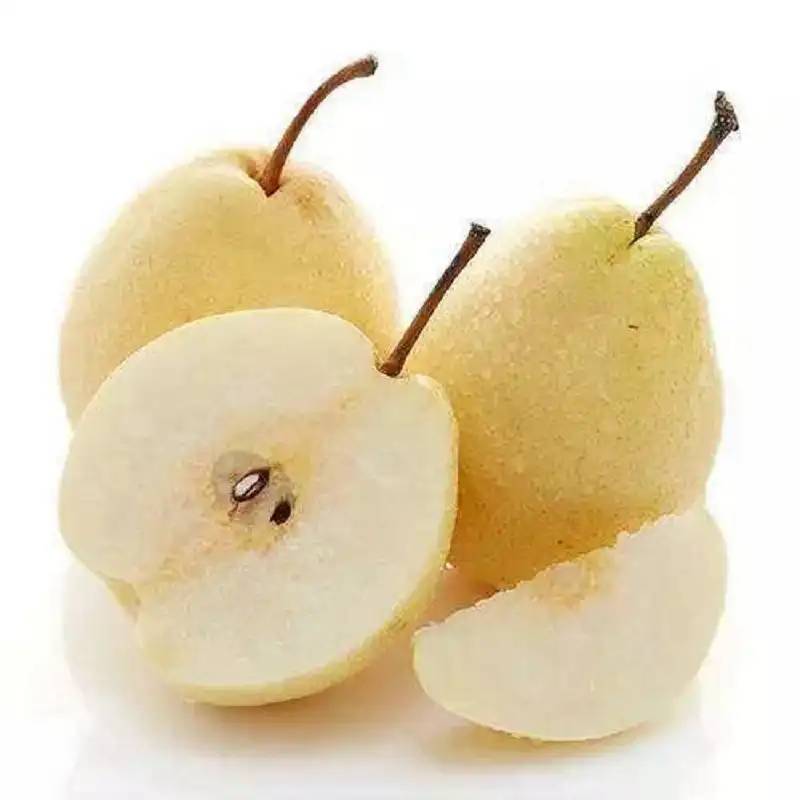
There are few reports on the antioxidant activity of pomegranate peel polysaccharides, but they can be compared with other active components of pomegranate, and compared with the antioxidant activity of the crude extract of pomegranate peel polyphenols reported by Yanhong Zhao, the activity of pomegranate peel polysaccharides in scavenging free radicals was lower than that of the crude extract of pomegranate peel polyphenols but the activity in scavenging hydroxyl radical was higher than that of the crude extract of pomegranate peel polyphenols in the experiment at the same concentration, and the difference showed that the antioxidant activities of pomegranate peel polysaccharides and polyphenols were not the same. This difference suggests that the antioxidant activities of pomegranate peel polysaccharides and polyphenols are not the same, but it cannot be concluded that pomegranate peel polysaccharides have higher or lower antioxidant activities than polyphenols. The antioxidant activity of pomegranate may also depend on its species, cultivation area, climatic maturity and cultivation technology, and polysaccharide antioxidant activity has many different ways of action, such as scavenging free radicals, decomposing peroxides and chelating metal ions in vitro, and enhancing the activity of antioxidant enzymes and inhibiting lipid peroxidation in vivo[17] .
Tannins in pomegranate peel also have antioxidant effects. Cao Pengfei[18] studied the antioxidant effects of tannins in pomegranate peel and green tea in the three aspects of the removal of hydroxyl radicals and superoxide anion radicals, as well as the antioxidant properties of fats and oils, and the results showed that the tannins in green tea have a strong ability to remove free radicals, and they are better than the pomegranate peel tannins in antioxidant properties of fats and oils, and that the tannins in pomegranate peel have a weaker ability to resist free radicals than saturated fats. In the antioxidant activity against fats and oils, pomegranate tannins are weak against unsaturated fats and strong against saturated fats.
Yang Cheng[19] and others used thin-layer chromatography-autoradiography to isolate and detect the free radical-scavenging active components of pomegranate peel, and inferred that the active components were mainly ellagitannins. Zhou, Benhong et al.[20] produced OH by rhodamine, B-Cu2+ -H2 O2 system and O2 - - - by catechol autoxidation system. The effects of pomegranate peel tannin extract, ellagic acid-gallic acid mixture, and vitamin C were compared to discuss the scavenging effects of the three solutions and their respective concentrations on free radicals based on the magnitude of the constants of action and to make preliminary inferences on the mechanisms of action. The results showed that pomegranate peel ellagitannins had a good scavenging effect on both hydroxyl radicals and superoxide anion radicals, and the scavenging effect could be realized at lower concentrations. Therefore, the ellagitannins in pomegranate peel are also protective against free radicals.
The antiradical and antioxidant effects of flavonoids have been increasingly emphasized. The antioxidant study on the total flavonoid extract of pomegranate rind showed that the total flavonoid extract of pomegranate rind had a certain scavenging ability on - OH and O2 -, and compared with the same concentration of Vc solution, the scavenging ability of this extract on - OH was more than that of Vc solution, and the scavenging ability on O2 - was lower than that of Vc solution[21] .
3 Relationship between antioxidant activity of pomegranate peel and other pharmacological activities
Other pharmacological activities of pomegranate peel are also related to its antioxidant activity. Studies have shown that[22] the extract of pomegranate peel can significantly reduce the rate of sister chromatid exchange in the mouse mutation model induced by cyclophosphamide, and it can effectively inhibit the genetic damage caused by exogenous mutagens. It can be hypothesized that the reduction of chromosome damage by pomegranate peel extract may be manifested by its ability to scavenge excessive free radicals in the body and terminate the free radical reaction.
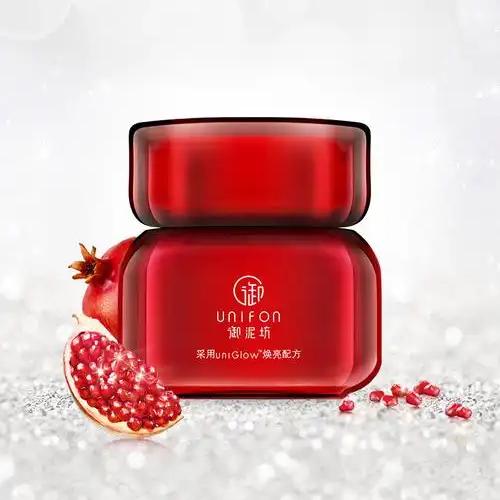
Ding Wei et al[23] showed that the serum triglyceride (TG), total cholesterol (TC), and low-density lipoprotein cholesterol (LDL-C) levels in the high-dose group of pomegranate pericarp alcoholic extract were significantly lower than those in the model group, and the high-density lipoprotein cholesterol (HDL-C) was significantly higher, which was close to the level of the normal group. It is suggested that the hypolipidemic effect of pomegranate peel extract is realized by increasing the antioxidant effect and reducing the lipid peroxidation products. Li Yunfeng et al[24] compared the antioxidant activity of pomegranate peel extract with that of pomegranate pulp extract, and found that pomegranate peel extract, which is rich in total polyphenols, flavonoids, and vitamin C, had a stronger scavenging ability than pomegranate pulp extract in scavenging superoxide anion radicals, hydroxyl radicals, and peroxyl radicals as well as in inhibiting the oxidized low-density lipoproteins induced by CuSO4, thus demonstrating a strong antioxidant effect. The natural antioxidants contained in pomegranate rind can effectively scavenge free radicals such as O2--, - OH, ROO--, etc. and inhibit the oxidation of LDL, and thus may have an inhibitory effect on atherosclerosis (AS).4 The antioxidant activity of pomegranate rind has been shown to be a major contributor to the development of atherosclerosis.
4 Magnitude of antioxidant activity of pomegranate peel
The stronger the antioxidant activity of natural products in plants, the higher the ability to effectively remove free radicals in the body, thus effectively preventing the occurrence of cardiovascular diseases. Research has found that some fruits and vegetables are rich in natural antioxidant substances, such as VC phenolic compounds, flavonoids, etc., which have strong in vitro antioxidant effects, and the antioxidant power of pomegranate among fruits is particularly prominent, which is about 350-100 times higher than that of apples, pears and peaches, which are often consumed. The antioxidant activity of pomegranate peel was two times higher than that of red wine and green tea extracts, while pomegranate juice, pomegranate fresh leaf extract and pomegranate seeds had stronger antioxidant activity (about 26.5 times) than that of pomegranate juice and fresh pomegranate seeds[25-29] .
Tang Pengcheng et al.[30] compared the free radical scavenging and lipid peroxidation inhibition abilities of pomegranate peel extract with gallic acid and green tea polyphenols, and showed that pomegranate peel extract was more effective in scavenging hydroxyl radicals, superoxide anionic radicals, DPPH-radicals, and inhibiting lipid peroxidation than gallic acid and green tea polyphenols, which is of great value for further research and development. Experiments showed that the ability of total pomegranate peel polyphenols to scavenge DP-phyl radicals was related to the nature and composition of the extraction solvent, the auxiliary extraction method, and the treatment method of the extract. The nature and composition of extraction solvents, auxiliary extraction methods, and the treatment methods of the extracts all have different effects on the antioxidant activities of polyphenols [31-32]. Further studies are needed to optimize the in vitro antioxidant activity of pomegranate peel extracts.
5 Summary and Prospects
Modern medicine and free radical science have increasingly demonstrated that free radicals are closely related to many life phenomena such as atherosclerosis, hypertension, cataracts, cancer, arthritis, and rheumatoid diseases[33] . Pomegranate rind polyphenol extract can effectively scavenge free radicals and act as an antioxidant, effectively preventing free radicals from damaging healthy cells and effectively preventing the aging of the body. As a natural antioxidant, pomegranate peel has the advantages of wide source, high extraction rate, strong antioxidant activity, high affinity with the body and high safety, which are incomparable with synthetic antioxidants, and it is the focus of future research. In recent years, the author has reviewed the antioxidant principles and effects of pomegranate peel, its antioxidant components, the magnitude of antioxidant activity, and its relationship with other pharmacological activities, with the aim of providing theoretical references for the search for and the development of a new type of highly effective natural antioxidant to replace the traditional synthetic antioxidants. It also lays the foundation for further expanding the application of pomegranate peel in food and medicine.
References:
[1] Ling, Guanting. Antioxidant food and health [M]. Beijing: Chemical Industry Publishing House, 2004.
[2] Li Jeshu, Jia Dongying, Yao Kai, et al. Progress in the study of bioactive components of pomegranate and their pharmacological effects[J]. Chinese Modern Traditional Medicine, 2009 , 11(9) :7-10.
[3] ZHANG Xi, JIA Dongying, YAO Kai, et al. Study on the antioxidant effect of pomegranate peel extract[J] . Chinese Oils and Fats, 2006 , 31(8) :51-55.
[4] Negi P S , Jayaprakasha G K , Jena B S. Antioxida - nt and an-timutagenic activities of pomegranate peel extracts [J] . Food Chemistry , 2003 , 80 ( 3 ) : 393 - 397.
[5] TIAN Hu, LIU Yanjun. In vitro antilipid peroxidation effects of pomegranate peel extract[J] . JOURNAL OF SHIHEZI UNIVERSITY: NATURAL SCIENCE, 2007 , 25( 4) : 475-477.
[6] ZHOU Ben-Hong, WANG Hui-Yuan, WU Yue-Yue, et al. Protective effect of pomegranate peel on lipid peroxidation of erythrocyte membrane[J] . Journal of Guangdong Pharmaceutical University, 2007 , 23( 5) : 547-549.
[7] Shahid I , Saba H , Mubeena A , et al. Efficiency of pomegranate peel extracts in stabilization of sun- flower oil under aAc-celerated conditions[J] . Food Research International , 2008 , 41 ( 2 ) :194-200.
[8] Mirdehghan S H , Rahemi M. Seasonal changes of mineral nutrients and phenolics in pomegranate fruit [J] . Scientia Horticulture , 2007 , 111(2) :120-127.
[9] Saito Ke , Kohno M , Yoshizaki F. Extensive screening for edible herbal extracts with potent scavenging activity against superoxide anions[J] . Plant foods for human nutrition , 2008 , 63(2) :65-70.
[10] Qian Zhang, Dongying Jia , Kai Yao. . Antiliperoxidant activity of pomegranate peel extracts on lard [J] . Natural Product Research , 2007 , 21 ( 3 ) : 211-216.
[11] LU Xueying, RYM Guli Abdulla, LI Yanhong. Antioxidant, antimicrobial and antitumor activities of total polyphenols of Xinjiang Pomegranate Peel[J] . Food Science: 2012 , 33(9) ,26-30.
[12] Ephraim P L , Robert A N. Punica granatum(Pomegranate) and its potential for prevention and treatment of inflammation and cancer[J] . Journal of Ethnopharmacology , 2007 , 109 : 177-206.
[13] Chinta N P , Pares H D , Lal H , et al. Safety assessment of pome-granate fruit extract : Acute and subchronic toxicity studies[J] . Food and Chemical Toxicology, 2008 , 46(8) : 2 728-2 735.
[14] ZHAO Yanhong, LI Jianke, LI Guorong. Purification of polyphenols from pomegranate peel and characterization of their antioxidant activity [J]. Food Science , 2010 , 31 (11) : 31-36.
[15] LIANG Jun, LI Jianke, ZHAO Wei, et al. In vitro anti-lipid peroxidation effects of pomegranate peel polyphenols[J] . Journal of Food and Biotechnology, 2011 , 31(2) :159-165.
[16] Ke Chunlin, Wang Di, Deng Yuanxi, et al. Preparation and antioxidant activity of polysaccharides from pomegranate skin [J]. Journal of Tropical Crops 2011 , 32(4) :684-689.
[17] Ke C L , Qiao D L , Gan D. Antioxidant acitivity invitro and of the capsule polysaccharides from subsp [J] . Carbohydrate Polymers , 2009. 75 ( 4 ) : 677-682.
[18] Cao Pengfei. Antioxidant effects of tannins in pomegranate peel and green tea[J] . Anhui Agricultural Science, 2011 , 39(20) : 12 136-12 140.
[19] YANG Cheng, XIONG Yanjing, LIU Hui. Determination of free radical scavenging activities of pomegranate peel by thin-layer chromatography-autoradiography[J] . Journal of Anhui South Medical College, 2011 , 30( 4) :270-272.
[20] ZHOU Ben-Hong, WANG Hui-Yuan, GUO Zhi-Lei, et al. Removal of hydroxyl radicals and superoxide anion radicals by pomegranate peel tannery[J] . Journal of Pharmacy of the Chinese Academy of Medicine, 2008 , 28(17) : 1 442-1 445.
[21] WU Jia. Extraction and study of chemical components of Hetian durian in Xinjiang[D] . 2011 , 34-35.
[22] YANG Cheng, GUI Lin, DONG Qun. Study on the radical scavenging and sister chromatid exchange rate inhibiting activity of extracts from pomegranate skin[J] . Chinese patent medicine, 2011 , 33(12) :2 155-2 156.
[23] DING Wei, SUN Jianxin, ZHA Wenfeng, et al. Experimental study on the hypolipidemic effect of alcoholic extract of durian peel[J] . Experimental study on the hypolipidemic effect of grenadine extract[J] .
[24] Li Yunfeng , Guo Changjiang, Yang Jijun , et al. E-valuation of antioxidant properties of pomegranate peel extract in comparison with pomegranate pulp extract[J] . Food Chemistry , 2006 , 96 ( 2 ) : 254-260.
[25] GUO Changjiang, YANG Jijun, LI Yunfeng, et al. Comparative study on the determination of antioxidant activity of different parts of fruits by FRAP method[J] . China Public Health, 2003 , 19 :841-843.
[26] Thring T S , Hili P , Naughton D P. Anti-collagenase , anti-elastase and anti-oxidant activities of ex- tracts from 21 plants[J] . BMC Complementary and Alternative Medicine , 2009, (9) :27
[27] Okonogi S , Duangrat C , Anuchpreeda S. et al.Comparison of antioxidant capacities and cytotoxic- ities of certain fruit peels[J] . Food Chemistry , 2007 , 103(3) : 839-846.
[28] Sestlli P , Martineli C , Ricci D , et al. Cytoprotectiva effect of preparations from various parts of Punica granatum L. fruits in oxida-tively injured mammalian cells in comparison with their antioxi- dant capacity in cell free systems[J] . Pharmaco- logical Research , 2007 , 56(1) :18-26.
[29] YANG Jinhua, LI Bo, JI Baoping. Antioxidant Properties of Common Edible and Medicinal Plants in China [J]. Food Science , 2006 , 27 (6) : 87-91.
[30] TANG Pengcheng, JIAO Shirong, TANG Yuanmou, et al. Comparative study on in vitro antioxidant activity of durian peel extract[J] . Food Research and Development, 2012, 33(1):12-15.
[31] ZHOU Ancun, TANG Jinliang, FENG Zuqun, et al. Study on the antioxidant activity of total polyphenols of pomegranate peel extracted by different methods [J]. Shizhen Guomian Guomao, 2012 , 23(2) :324-326.
[32] TANG Yuanmou, JIAO Shirong, LIU Jia, et al. Optimization of impact surfaces of extraction conditions of antioxidants from pomegranate peel [J]. Food Science and Technology, 2011 , 31(7) :1936.
[33] Singh R P , Chidambara Murthy K N , Jayaprkasha G K. Studies on the antioxidant activity of pomegranate peel and seed extracts using invitro models [J] . Joumal of agricultural and food chemistry , 2002,(50) :81-86.


 English
English French
French Spanish
Spanish Russian
Russian Korean
Korean Japanese
Japanese